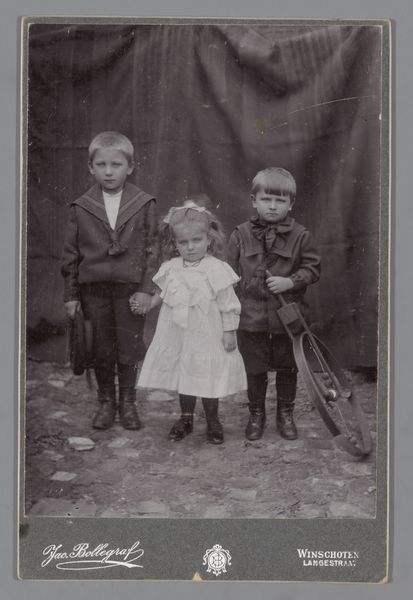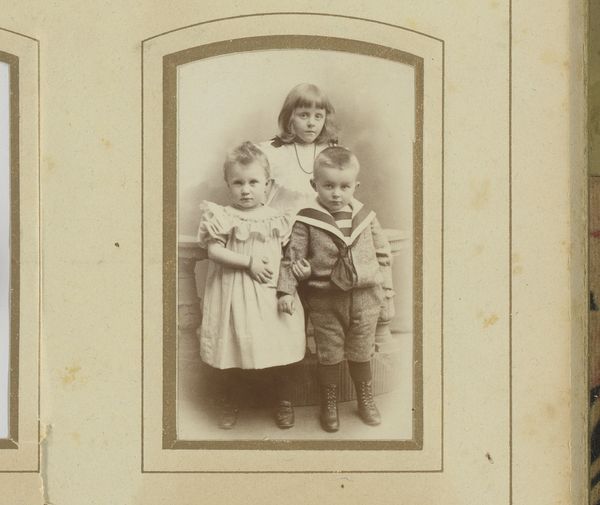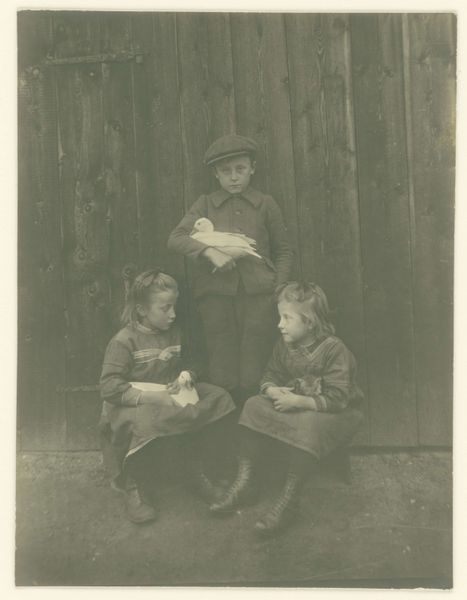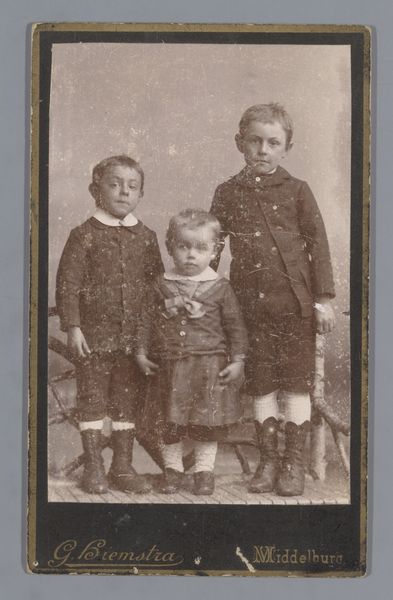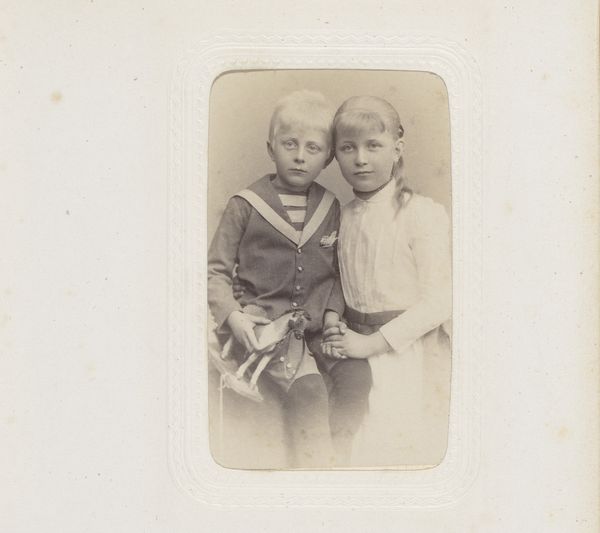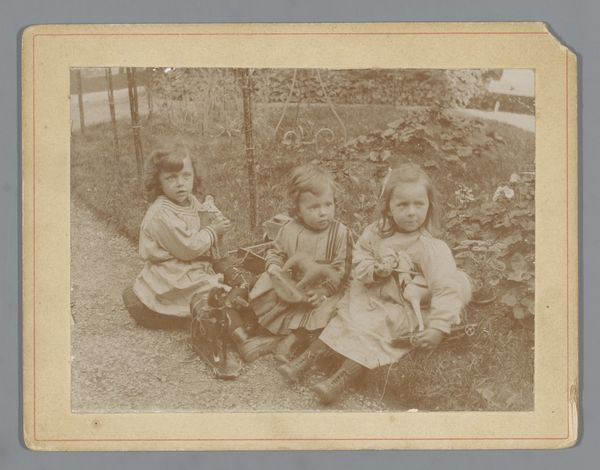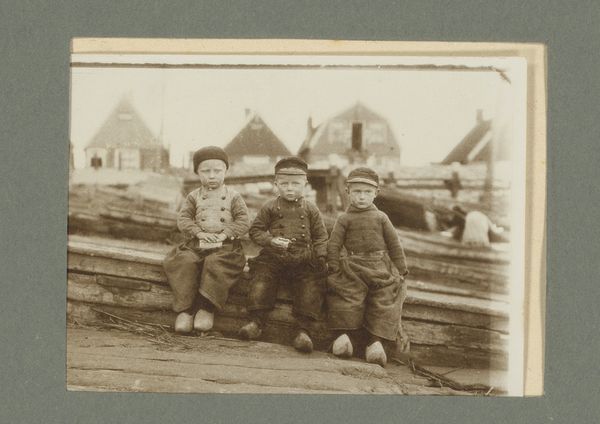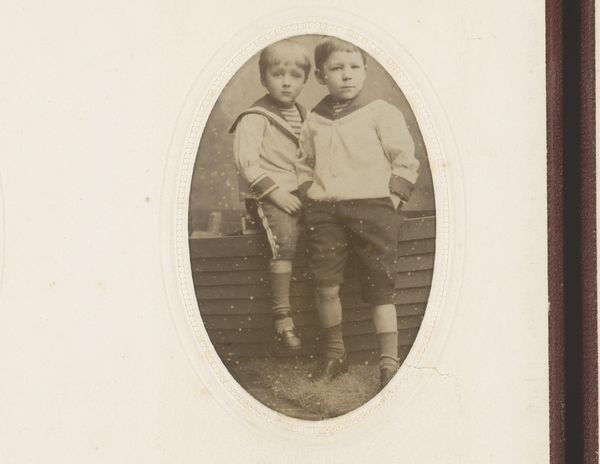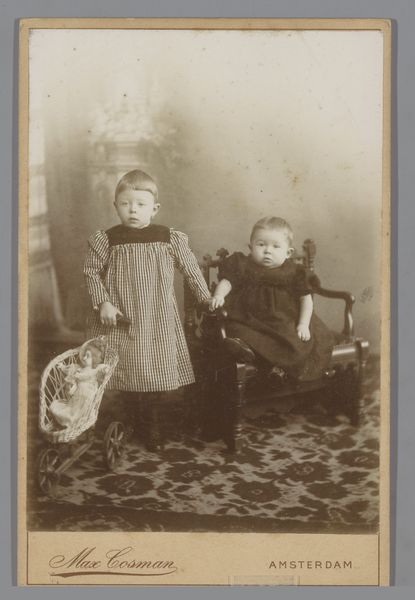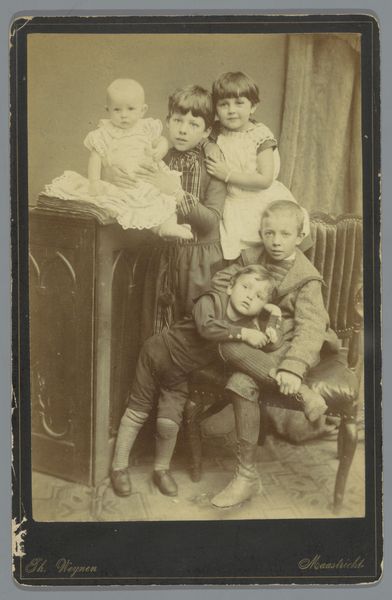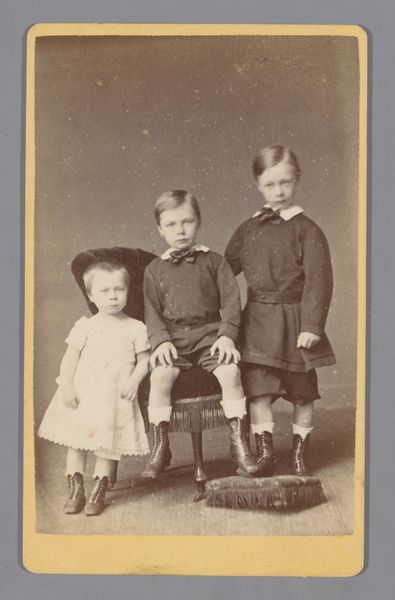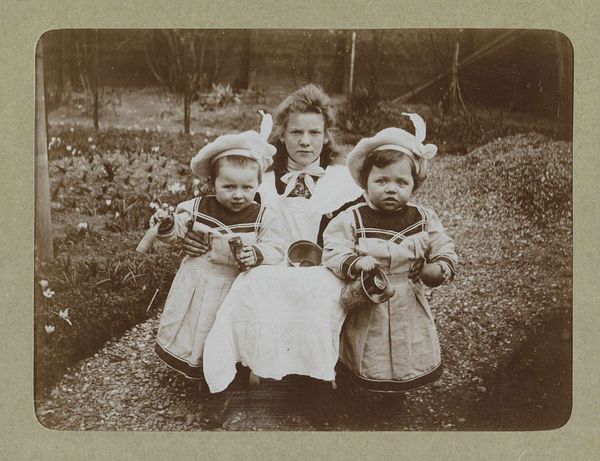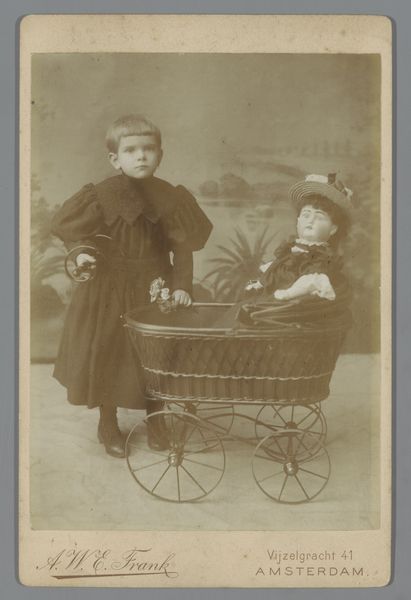
Drie kleuters in een tuin spelend met een lint, waarschijnlijk de tweeling Ad (midden) en Johanna (links) en Han (rechts) van der Kop after 1903
0:00
0:00
photography
#
portrait
#
photography
#
group-portraits
#
realism
Dimensions: height 73 mm, width 98 mm
Copyright: Rijks Museum: Open Domain
Curator: This photograph, taken after 1903 by Willem Carel van der Kop, captures three young children in a garden, likely the artist's own: the twins Ad and Johanna, and Han. They're playing with a ribbon. It's housed at the Rijksmuseum. Editor: There's a haunting, melancholic mood immediately evident, wouldn't you say? The muted tones contribute to this, as does the slightly stiff arrangement of the children. It almost feels staged, carefully constructed. Curator: It does speak to the formality of portraiture at the time, yes. However, I am more struck by how this image captures childhood and the importance of play. Ribbon games, for instance, were laden with symbolism. The ribbon could represent connection, fate, or even the umbilical cord. Editor: I can see that symbolic potential. What about the visual space, though? The depth of field is shallow. Notice how the foliage in the background blurs almost entirely. Our eyes are focused on the tonal modulations on the plane where children are, nothing distracts the gaze. Curator: Precisely! Consider how those backgrounds frame the subjects: they provide an Edenic or liminal backdrop, invoking innocence, and the dawn of adulthood. Editor: And what of their clothing? Notice the textural details—the woven ribbon against the flat, smooth fabric of the coats and sailor’s attire. Van der Kop plays with tactile contrast. It all draws the eye, makes you want to reach out and touch the surfaces. Curator: It's quite striking, how clothing signifies class here but, on a symbolic level, their clothing implies belonging. Those sartorial signals underscore their place in Dutch society at the time, hinting at continuity and cultural legacy. Editor: Seeing these visual cues layered together lets one sense what those bygone photographic practices stood for in representing identity. This all makes this piece quite captivating to analyze from different angles. Curator: Yes, indeed! I find it quite evocative how it touches on both personal intimacy and wider social frameworks.
Comments
No comments
Be the first to comment and join the conversation on the ultimate creative platform.
